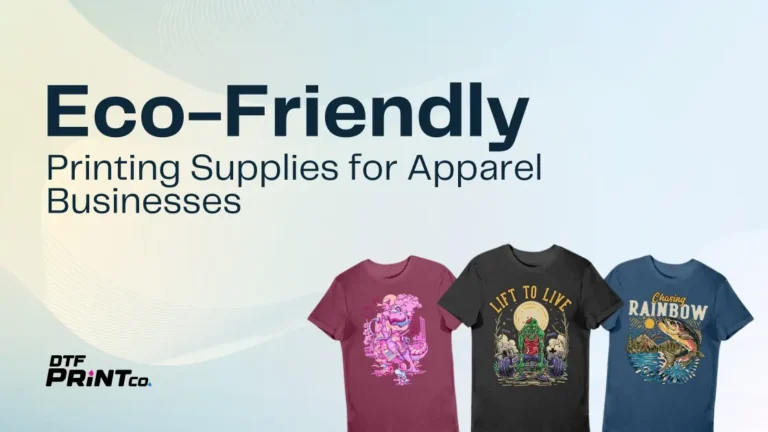Have you ever bought a cool premade transfer for a t-shirt, mug, or tote bag and ended up with a mess instead of a masterpiece? You’re not alone! Whether you’re crafting for fun, running a small business, or just getting started with DIY projects, it’s easy to make mistakes with premade transfers. The good news? These problems are super common and even easier to fix once you know what you’re doing.
In this article, we’re going to walk you through the most common mistakes people make when using premade transfers—and how to avoid or fix them. By the end, you’ll feel confident and ready to get great results every time.
This guide is perfect for beginners, students, and even experienced crafters who want a refresher or a few new tips. We’ll also give you examples, tools, and step-by-step advice to help every project go smoothly.
What Are Premade Transfers?
Premade transfers are designs printed on special paper or film that can be applied to different surfaces using heat. These transfers are great for decorating things like:
- T-shirts
- Hoodies
- Mugs
- Tote bags
- Hats
- Wood signs
- Mousepads
- Puzzles
- Coasters
Instead of designing and printing everything from scratch, premade transfers save time and still give you a professional-looking result. Here are the most popular types:
- Heat Transfer Vinyl (HTV): Cut vinyl designs that stick to fabric using heat. These are great for simple graphics or text.
- Direct to Film (DTF): Full-color transfers that press easily onto many types of fabric. These are detailed and versatile.
- Sublimation Transfers: Ink designs that bond with polyester surfaces. The ink becomes part of the material.
- Screen Print Transfers: Printed ink designs that feel soft and last long after many washes. Great for bulk t-shirts.
Why Do Transfers Sometimes Go Wrong?
Even though premade transfers are simple and fast, they still require the right technique. Many people make little mistakes that can ruin the final product or make it look messy or unprofessional. Let’s go over the most common ones and how you can avoid them.
1. Using the Wrong Heat Settings
One of the biggest mistakes is using the wrong temperature. If your heat press or iron is too hot or too cold, your transfer might not stick—or it could melt or burn the design.
How to Fix It:
- Read the instructions that come with the transfer every time.
- Use a heat press thermometer or laser temp gun to check the accuracy of your machine.
- Don’t guess the temperature! Set it to the exact degree needed.
Example: If your DTF transfer needs 300°F but your press is set to 350°F, the design might melt, lose color, or fade unevenly.
2. Not Applying Enough Pressure
Not all heat presses are created equal. If your machine doesn’t apply even or strong enough pressure, the transfer won’t fully stick. This could cause parts of the design to lift, peel, or fall off after washing.
How to Fix It:
- Make sure your press is tight and firm before pressing.
- For thick items like hoodies or seams, use a pressing pillow to even out the surface.
- Don’t press with light hands. Firm, even pressure is important.
Tip: If you’re using an iron, press down hard and don’t move it around too much.
3. Forgetting to Pre-Press the Fabric
This step is easy to skip but super important. Fabric holds moisture and wrinkles that can mess up your design or stop it from sticking properly.
How to Fix It:
- Always press your fabric for 5–10 seconds before placing your design.
- This smooths wrinkles and removes moisture that could affect the bond.
Example: A damp shirt might look fine but can stop your transfer from bonding completely.
4. Peeling the Transfer Too Early or Too Late
Some transfers need to be peeled while still hot. Others need to cool first. If you peel at the wrong time, your design might lift, bubble, or wrinkle.
How to Fix It:
- Check if the transfer is a “hot peel,” “warm peel,” or “cold peel.”
- Follow the timing instructions exactly to avoid ruining the design.
- Don’t rush the process. Waiting a few extra seconds can save your project.
Helpful Tip: Set a timer so you don’t guess or forget.
5. Using the Wrong Transfer for the Material
Not all transfers work on every surface. For example, sublimation only works on polyester, not cotton. Using the wrong type of transfer can lead to dull results, poor adhesion, or quick fading.
How to Fix It:
- Match the transfer type to the item you’re pressing.
- Sublimation: light-colored polyester items only
- HTV: cotton, blends, polyester
- DTF: most fabrics, including dark and textured ones
- Vinyl or specialty transfer: wood, glass, mugs
Example: If you use a sublimation transfer on a 100% cotton shirt, the image will be dull or completely disappear after washing.
6. Ignoring the Instructions
Every brand is different. One transfer might need 15 seconds at 325°F, while another needs 10 seconds at 290°F with medium pressure.
How to Fix It:
- Always read and follow the directions that come with the transfer.
- Don’t assume all transfers work the same way or follow generic tutorials.
Tip: Keep a binder or digital folder with instructions for each brand you use.
7. Working on a Dirty or Dusty Surface
Dust, lint, and oils from your hands can stop transfers from sticking well. Even small debris can create bumps or gaps in your design.
How to Fix It:
- Clean your surface before pressing.
- Use a lint roller on fabric to remove fuzz.
- Wipe mugs, tumblers, or hard surfaces with rubbing alcohol.
Reminder: A clean press plate gives better results too. Clean it regularly.
8. Letting the Design Move While Pressing
If your design shifts while pressing, it can end up crooked, doubled, blurred, or misaligned. This is a common mistake that’s easy to avoid.
How to Fix It:
- Use heat-resistant tape to hold the transfer in place.
- Use a ruler or t-shirt alignment guide to make sure it’s centered.
- Press firmly and avoid bumping or lifting the press too fast.
Pro Tip: Don’t slam or pop open your heat press—it can move the design.
9. Pressing Too Long
More heat doesn’t mean better results. If you press too long, the design can crack, melt, bubble, or fade. It may also lose detail or change color.
How to Fix It:
- Stick to the time listed in the instructions.
- Use a digital timer or set a phone alarm.
- Practice on a test shirt or scrap fabric if you’re unsure.
Example: Pressing a screen print transfer for 25 seconds when it needs only 10 will likely damage it beyond repair.
10. Using an Iron When a Heat Press Is Needed
While irons can work for small or emergency projects, they don’t give the even pressure or controlled heat like a heat press does. This often leads to poor results.
How to Fix It:
- Use a real heat press if possible. Even a small 9×12 machine works great.
- If you must use an iron:
- Turn off the steam
- Apply firm, even pressure
- Press each section without moving the iron around
Note: Some transfers won’t work at all with an iron. Always check the packaging!
Real-Life Fixes from Crafters
Case 1: Jamie used a sublimation transfer on a cotton hoodie. The image washed out quickly.
- Fix: She switched to using HTV designed for cotton fabric.
Case 2: Carlos’s transfer cracked after just one wash.
- Fix: He realized he had pressed too long at too high a temperature. He now uses a timer and checks heat settings every time.
Case 3: Mia’s shirt design came out crooked.
- Fix: She started using a t-shirt alignment tool and heat-resistant tape to keep everything perfectly straight.
Case 4: Sam’s mug design had bubbles and peeled at the edges.
- Fix: He cleaned the mug with rubbing alcohol and used a silicone wrap for even pressure in the oven.
Easy Step-by-Step Transfer Guide
- Pick the right transfer for your project—make sure it matches your fabric or surface type.
- Clean your surface (shirt, mug, wood, etc.) to remove dust, lint, or oils.
- Pre-press fabric for 5–10 seconds to eliminate moisture and wrinkles.
- Set the correct temperature and time according to the transfer type and brand instructions.
- Place your transfer exactly where you want it and tape it down using heat-resistant tape to avoid movement.
- Press with firm, even pressure to make sure the entire design gets equal heat and adhesion.
- Peel at the right time (hot, warm, or cold)—check the instructions carefully.
- Let it cool completely before touching, stretching, or washing the item.
- Wait at least 24 hours before the first wash to allow the transfer to fully bond.
- Wash gently inside out using cold water and hang dry when possible to extend the design’s life.
Helpful Tools for Better Transfers
- Heat press machine (small or full-size)
- Teflon sheets or parchment paper
- Heat-resistant tape
- Lint roller
- Rubbing alcohol (for mugs or hard surfaces)
- T-shirt alignment guides or rulers
- Infrared thermometer gun
- Pressing pillow or foam pad
- Silicone mug wraps (for sublimation mugs)
(FAQs)
Can I reuse a transfer if it didn’t stick?
Usually no. Once heat is applied, most transfers can’t be reused because the ink or adhesive has already been activated.
Why did my design peel off after washing?
You might’ve used the wrong time, pressure, or peel method. Also, make sure to wait 24 hours before the first wash, and use cold water.
Can I use premade transfers on mugs or wood?
Yes, but only the right kind! Use sublimation for coated mugs, and HTV or adhesive vinyl for wood signs or plaques.
What kind of fabric works best with transfers?
Polyester for sublimation, cotton for HTV, and blends or dark fabric for DTF.
How long will a transfer last?
If applied correctly, most transfers last through dozens of washes. Following care instructions helps extend their life.
Conclusion: You Can Do This!
Using premade transfers is fun, creative, and easy once you learn the basics. Mistakes happen to everyone—even the pros! But with a little care and the right tools, you can make beautiful, long-lasting projects every time. Just remember:
- Always read the instructions
- Use the correct tools for the job
- Practice a little and be patient
You’ve got this!






